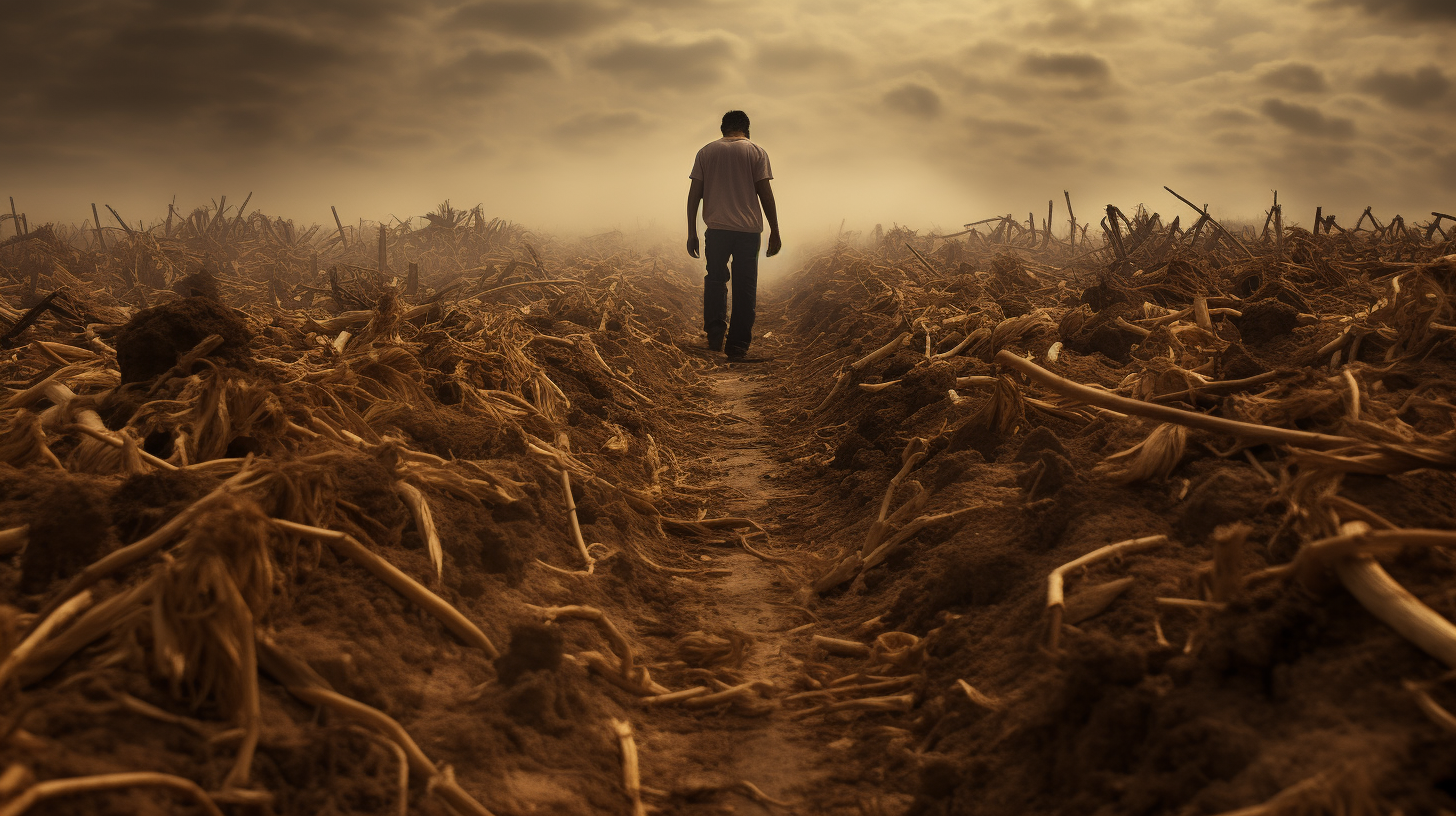Under the scorched canopy of a relentless sun lies a vast, barren expanse. Once brimming with verdancy, the fields that fed nations have withered into a sepulchral wasteland, a mosaic of crackled earth stretching beyond horizons. This, dear readers, is the haunting tableau of The Last Harvest. In an uncanny echo of our past publication, The Great Famine – When Our Breads Bought Dustbowl Blues, we delve deeper into this dystopian reality where the Earth coughs up dust instead of bounty.
As humanity faces the twilight of traditional agriculture, scientists issue their final elegies for soil health, now nothing but a reverie. Our quests for sustenance are met with ghost crops that swing, spectral in the dead breeze. We bear witness to a cacophony of despair as agronomists openly mourn, “We’ve toiled too late.” The symphony of life, once composed by the harmonious rustle of golden wheat and the soft murmur of corn stalks swaying, has fallen silent. Not even the pests remain; no creature finds haven or harvest here.
The last harvest is not merely an event—it is the era that encapsulates the end of an epoch. The devils of drought and the specters of salination have risen unchallenged; the overseers of doom tasked with chaperoning our once fertile crescents into desolation. Surreal, perhaps, yet the vanishing of the verdant patchwork quilt that was our breadbasket, resonates a stark, bleak reality.
The siren call for change—ignored. Our agricultural methods, once hailed as innovative, now damn us, having pillaged the planet to the point of irreversible exhaustion. The Rubicon of ruin was crossed with each unnatural extension of our appetites. This is the world that unfolds before us: where subsistence farmers clutch at straws, quite literally; where quandaries of quinoa and kale have graduated to telltales of survival;
A peculiar irony taints the air, as genetic titans meant to save us from hunger now stand as stoic sentinels over their own sterility. The marvel of genetic modification, once a pantheon of promises, wilts alongside the very crops it pledged to protect. It whispers a morbid tune—a requiem for resistance against nature’s vengeful resurgence.
Our culture of consumption has brought more than climate calamity; it has ushered in an era of anachronism. Tractors, icons of the industrial agricultural revolution, now rust relics among the ruins—monuments to the bygone era of plenty. They are mute testaments to humanity’s hubris, to a time when we believed we could forever bend the earth to our will.
And yet, in this sea of desolation, there abides an ersatz beauty. The setting sun, abundant in its apocalyptic splendor, casts an eerie, crimson tide across the decaying fields—creating a doppelgänger dawn at dusk. It is as haunting as it is captivating; an empyrean fire that burns up the last vestiges of hope.
For what is there to be done when desperation claws at the throat of civilization, and the only answer to the question of ‘when will it rain?’ is met with the silence of a starved sky? Philosophers and poets of plenty now scribe the chronicles of dust, regaling a future—an epoch yet to come, where maybe seeds of foresight will nest in the sores of our negligence.
We end not on a note of hope, for the dystopia we navigate is not a narrative to be altered with the twine of silver threads. It is, rather, a mirror held aloft; a jarring reflection of what might already be, should we not heed the echoes of these empty fields.
